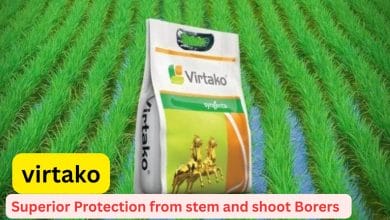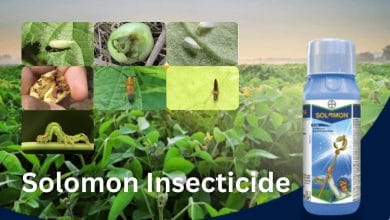Jump Insecticide: A Powerful Ally for Crop Protection

Jump Insecticide
Jump Insecticide, developed by Bayer CropScience, is a trusted solution for farmers seeking effective pest control across a wide range of crops. With its advanced formulation and broad-spectrum efficacy, Jump not only protects crops from harmful pests but also promotes healthier growth and higher yields.
Chemical Composition
Jump Insecticide is based on Fipronil 80% WG (Wettable Granule), a potent active ingredient from the phenylpyrazole chemical class. The formulation includes:
- Fipronil (Active Ingredient): 80%
- Inert Ingredients: 20% (includes emulsifiers, dispersants, and wetting agents)
Fipronil acts primarily as an ingestion toxicant, disrupting the central nervous system of pests and leading to paralysis and death.
Mode of Action
Jump works through both ingestion and contact. When pests consume or come into contact with the insecticide, Fipronil binds to specific receptors in their nervous system, blocking nerve impulses and causing paralysis. This dual-action ensures rapid and effective pest control.
Key Benefits
- Broad-spectrum pest control: Effective against stem borers, leaf folders, thrips, aphids, beetles, caterpillars, whiteflies, and mealybugs.
- Low-dose efficiency: Requires only a few grams per hectare, reducing environmental impact.
- Plant growth promotion: Enhances crop health and supports sustainable yields.
- Integrated Pest Management (IPM) compatibility: Ideal for eco-friendly farming practices.
- Long-lasting protection: Reduces the need for frequent applications.
Recommended Crops
Jump Insecticide is suitable for a variety of horticultural and field crops, including:
- Rice
- Grapes
- Onions
- Cabbage
- Chili
- Cotton
- Lentils
- Tomato
- Brinjal
- Coriander
- Mango
- Guava
- Litchi
- Apple
- Banana
Target Pests
Jump effectively controls:
- Stem Borer
- Leaf Folder
- Thrips (Thrips tabaci)
- Diamondback Moth
- Aphids
- Caterpillars
- Whiteflies
- Mealybugs
Dosage and Application
Jump is applied via foliar spraying. Dosage varies by crop and pest severity:
| Crop | Pest | Dosage (g/ha) | Water (L/ha) | Waiting Period (Days) |
|---|---|---|---|---|
| Rice | Stem borer, Leaf folder | 50–62.5 | 375–500 | 15 |
| Grapes | Thrips | 50–62.5 | 750–1000 | 20 |
| Onion | Thrips | 75 | 500 | 15 |
| Cabbage | Diamondback moth | 93.75 | 500 | 15 |
| Chili | Thrips | 50–62.5 | 500 | 5 |
| Cotton | Thrips | 75 | 375–500 | 14 |
Note: Always refer to the product label for exact mixing ratios and safety instructions.
FAQs
Q1: How often should Jump be applied?
A: Apply at the first sign of pest activity. Frequency depends on the severity of the pest and the type of crop.
Q2: Can Jump be used on all crops?
A: No. Use only on crops listed in the product label to avoid phytotoxicity.
Q3: Is Jump safe for bees?
A: No. It is highly toxic to bees. Avoid application during active foraging periods.
Q4: Does Jump help with plant growth?
A: Yes. Fipronil has demonstrated plant growth-enhancing effects, contributing to improved yields.
Q5: What is the waiting period before harvest?
A: Varies by crop—typically between 5 to 20 days.
Precautions
- Avoid use near aquaculture and during the flowering stages of crops, such as onions.
- Wear protective gear during application.
- Do not apply near beekeeping areas.
Alternate Products
If Jump is unavailable or unsuitable, consider these alternatives:
- Regent Insecticide (Fipronil-based)
- Coragen (Chlorantraniliprole)
- Tracer (Spinosad)
- Confidor (Imidacloprid)
Each has its own spectrum of activity and should be selected based on crop and pest type.
Conclusion
Jump Insecticide stands out as a reliable, efficient, and environmentally conscious choice for pest management. Its advanced formulation, low-dose requirement, and broad-spectrum efficacy make it a valuable tool for farmers aiming to protect their crops and boost productivity.







